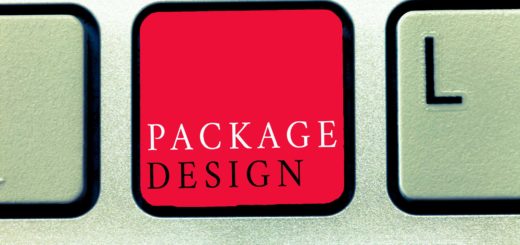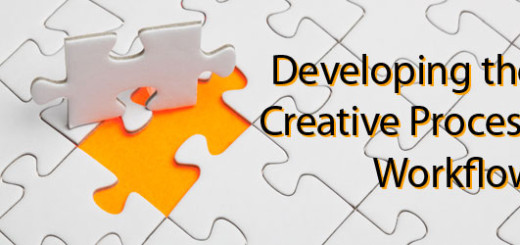A Guide To Using Images In Website Design
0Every good website needs to include visual aids. Not only do images break up the text on your website, but they can aid navigation and lend your site a much more professional feel. However, the way that you source and deploy images on your site is important. Get it wrong and your images can end up doing more harm than good.

Prioritize Real People
There are a number of studies that suggest that using images of real people is more effective than using more abstract imagery. Abstract imagery can be an excellent way of adding texture to your visual displays and creating interesting effects. However, in the majority of situations, it is far more effective to use the image of a real person than something abstract and difficult to decipher.
You should also be careful about using images of people in front of plain backgrounds or green screens. These are useful images for certain specific circumstances, but they are less effective as general illustrations.
Crop To The Top
Many website owners that utilize stock images will edit or modify them in some way in order to make them more original and make the website they appear on less generic. However, while there is a widespread perception that without heavy editing, these stock images will be too generic and recognizable to be of use, sometimes only a very minor edit is needed to make an image effective. Using images that are also in use on other websites isn’t necessarily a bad thing; users don’t expect every website they visit to be sourcing completely original imagery.
The simple act of cropping an image to alter its frame and change the subject of focus can make a dramatic difference to its look and feel. This is a doubly effective tactic when you are looking to create a textured image from a photo, such as when you crop out a city skyline in order to leave behind an image of the sky and clouds.
Go Beyond The First Page
Contrary to what many people believe, using stock images doesn’t mean that your website is necessarily going to be unoriginal. However, if you are pulling all of your images from the first result or two that search engines return, there is a greatly increased chance of you using the same images as other people. If you are willing to venture past the first page of results and dig beneath the surface, you will find all the images that are usually overlooked.
Just because an image isn’t within the top couple of results doesn’t mean that it isn’t worthwhile or valuable. In fact, an over-reliance amongst many website owners on those first few images means that there are plenty of high-quality options available beyond the first page for those that are willing to look.
Use Multiple Images For Product Photos
When it comes to illustrating products on your website, using just one or two images can be incredibly limiting. Using just a limited range of images can mean that some aspects of your product go unnoticed and its key features are underappreciated. On the other hand, ensuring that you capture your products from every possible position will mean that potential customers can see everything it has to offer. Not only this but using images that show your product next to other objects will make it much easier for users to see how big it is and make them more likely to order.
Use Icons To Their Full Advantage
Images of an excellent way of breaking up text on a website and preventing a reader from losing interest. Another important use of images is as a shorthand or replacement for text. This is something that we see, particularly when it comes to icons. Icons are simple images that stand in place of text, but which convey an easilyunderstood meaning to an audience.
Icons are a fantastic way of improving your website navigation. There are some icons whose usage is so universal that you could put them just about anywhere and they would be understood. For example, an icon of a house to represent a homepage or an icon of a magnifying glass to represent a search feature are both commonplace enough that they are now universally understood.
Don’t Forget To Optimize Your Images
Including images on your website is part of web design 101. However, simply adding images is only half of the equation. You need to optimize your images, otherwise, they could end up harming your website instead of helping it. For example, a particularly large image file will significantly increase your page load time and inhibit the user experience.
Optimizing your images will compress them as much as possible without compromising the quality. This will enable your pages to load much faster, and for image-heavy sites, it can make an enormous difference to performance.
Always Check The License
Prior to placing an image on your website, it is vital that you check what the exact terms of its license are. Some artists and photographers will grant you an unlimited license to use their images, which gives you permission to use them however you wish. Unfortunately, most licenses are more restrictive than this and will only grant you the rights to use the image under certain circumstances. Some licenses won’t even grant you permission to edit the images prior to publishing them on your website. It is important to know exactly what your rights are when using images from other people.
There is a plethora of stock images out there that can be used in an unlimited capacity, meaning that it doesn’t matter what you do with them or even whether you are making money from them. Many of the sources we have outlined in this article can provide you with these kinds of images, but it is essential that you check beforehand so you know what you can and can’t do with the images you add to your website.
Use Free Stock Photo Sites
You’re probably familiar with the likes of Getty Images and Shutterstock. While they can be great places to find stock photos, they also tend to be on the expensive side. Plus, the pictures are often too, well, “stocky” and not in-line with the type of quality content your audience expects to see.
Fortunately, there are some excellent alternatives where you can find and download eye-catching images without breaking the bank. Following is a list of the top 6 free stock photo sites for content marketers.
1. Unsplash
Home to over 850,000 images, Unsplash is an excellent resource for finding great quality photos of just about anything you can imagine. Everything you see on the website is sourced from the website’s community of dedicated contributors, which includes many talented photographers.
While there’s certainly no shortage of variety, the images on Unsplash are high resolution and downloadable in several sizes so that you can choose the best fit. A slick user interface makes it easy to explore the categories you’re looking for.
2. Gratistography
Here’s something a little different. Unlike other free stock photo websites, Gratistography prides itself on being “quirky” with a focus on offering a curated selection of unique, copyright-free images. Their collection is relatively small, but restassured that anything you choose to use will get noticed.
3. Stockvault
This website is not only great for photos, but also textures, graphics and illustrations that you can use anywhere you like for free. If you need something truly unique, Stockvault also provides premium photos, vectors and videos. This makes it a suitable destination for finding the type of compelling content required for visual storytelling.
4. Pexels
Ever since launching in 2014, Pexels has remained a leading option for both still and dynamic visual content. The website doesn’t require attribution and the photos can be used for both personal and commercial purposes.
Pexels also offers iOS and Android apps to help you find images on the go. If you happen to enjoy using the site, you can incorporate it into your workflow with their browser extensions, Google Slides add-on, Photoshop plugin or MS Office add-in. You can even plug it straight into WordPress for quick access.
5. Morguefile
Another unique website, Morguefile is all about more common, everyday pictures that don’t look like they were taken in a studio by an expensive camera. This makes it a great resource for content marketers who need something that doesn’t look commercial. Options abound with over 400,000 free images spanning a variety of categories.
6. Pikwizard
Finally, we have Pikwizard. Not only does this website offer a massive collection of free stock photos, it also offers a built-in editing tool that allows you to make several adjustments on your images before downloading them. There’s also a paid version with a more capable editor.
What’s great about these websites is that they all have a Creative Commons Zero (CC0) license. This means you can use them in any way you like, so feel free.
Images are a crucial part of website SEO, but how you use them is important. Follow the tips above and you can make the most of your images you source.




